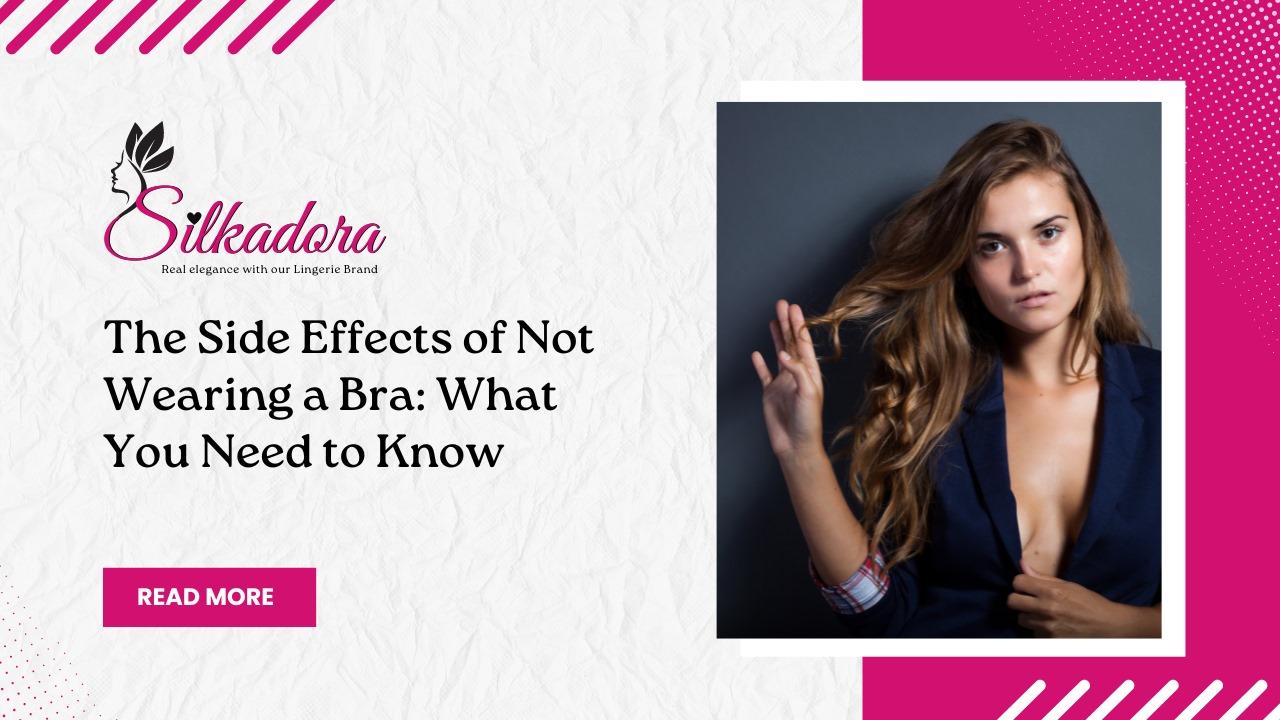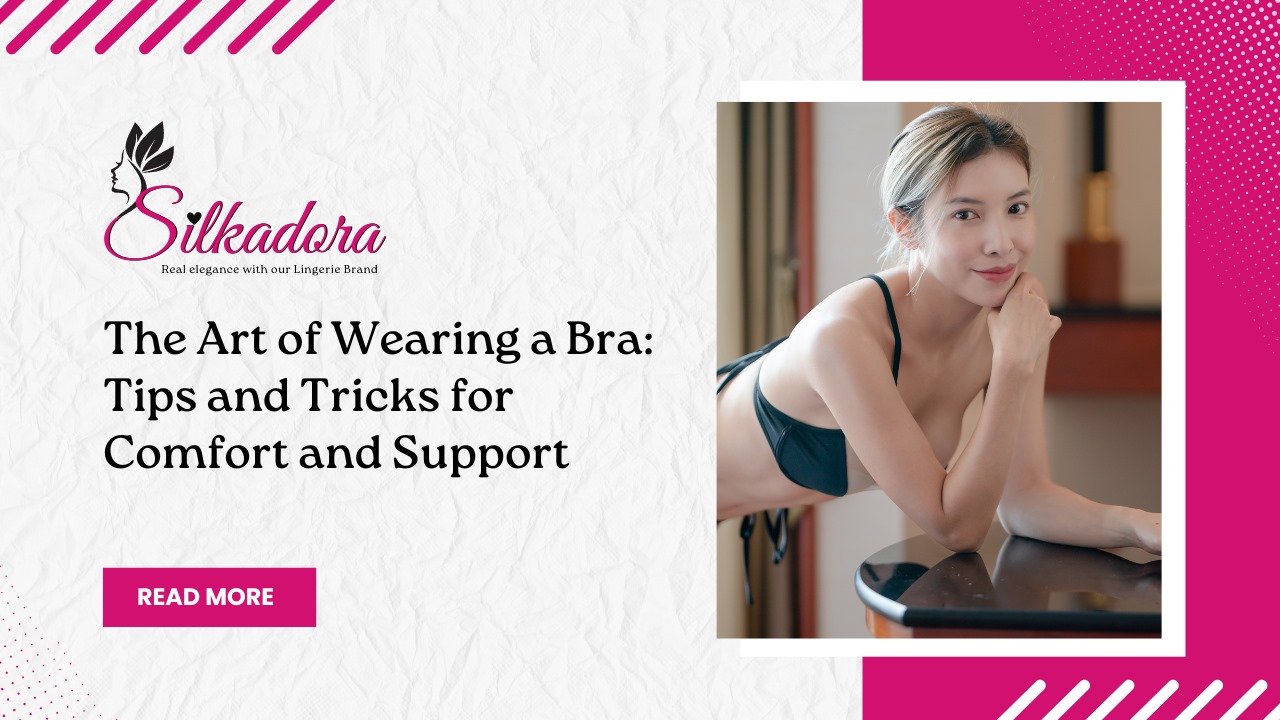Introduction to the topic
Are you a part of the growing trend of going braless? Whether it’s for comfort, personal preference, or simply embracing your natural self, the decision to ditch the bra comes with its own set of considerations. In this blog post, we delve into the side effects of not wearing a bra – both physical and psychological – so you can make an informed choice about what’s best for you and your body. Let’s explore together!
The reasons behind not wearing a bra
Many women choose not to wear a bra for various reasons. Some find bras uncomfortable and restrictive, while others prefer the natural feel of going braless. For some, it’s a matter of personal preference or even a form of protest against societal norms.
The rise of body positivity movements has also played a role in normalizing the choice to go without a bra. Embracing one’s natural shape and size has become more widely accepted, leading many to reject the idea that wearing a bra is necessary for support or aesthetics.
Additionally, there is growing awareness that constant bra-wearing may not be as essential as once thought. Studies have shown conflicting evidence on whether bras truly prevent sagging or offer significant health benefits. As such, some opt to forego wearing bras altogether in favor of comfort and freedom of movement.
The potential side effects of not wearing a bra
Not wearing a bra may seem liberating, but it can have potential side effects that are worth considering. One common physical side effect is back pain. Without proper support, the muscles in your back have to work harder to support your breasts, leading to discomfort and strain.
Another concern is sagging breasts. Over time, gravity can take its toll on unsupported breast tissue, causing them to lose elasticity and firmness. This can result in premature sagging.
Skin irritation is also a possible side effect of forgoing a bra. The friction between clothing and bare skin can lead to chafing or rashes, especially for those with sensitive skin.
It’s important to be aware of these potential consequences before deciding whether or not to wear a bra regularly.
Physical side effects: back pain, sagging breasts, and skin irritation
One common physical side effect of not wearing a bra is the potential for experiencing back pain. Without proper support, the muscles in your back have to work harder to compensate for the lack of breast support, leading to discomfort and strain.
Sagging breasts can also be a concern when going braless regularly. The Cooper’s ligaments, which help maintain breast shape, may weaken over time without the lift provided by a bra. This could result in breasts losing their firmness and starting to sag prematurely.
Additionally, skin irritation is another issue that some may face when skipping out on bras. The friction between clothing and bare skin can lead to chafing or rashes, especially in sensitive areas like under the breasts.
To mitigate these physical side effects, it’s essential to consider alternatives like sports bras or bralettes that offer lighter support while still providing some comfort and protection for your breasts.
Psychological side effects: confidence and self-image
When it comes to the decision of whether or not to wear a bra, psychological factors can play a significant role. For many individuals, going without a bra can impact their confidence and self-image in various ways.
Some may feel empowered and liberated by embracing their natural shape, while others might struggle with feelings of insecurity or self-consciousness. Society’s beauty standards often dictate that breasts should be lifted and supported, which can influence how people perceive themselves when not wearing a bra.
For some, choosing not to wear a bra is an act of rebellion against societal norms and expectations. It can be a form of self-expression and body positivity. On the other hand, there are those who may feel exposed or vulnerable without the support of a traditional undergarment.
The decision to wear or not wear a bra is deeply personal and subjective. It reflects individual beliefs about beauty, comfort, and acceptance.
Social implications of not wearing a bra
Going braless can sometimes raise eyebrows in social settings. Some may view it as a bold statement of liberation, while others might perceive it as inappropriate or unprofessional. The decision not to wear a bra can challenge societal norms and expectations surrounding women’s bodies.
In more conservative environments, not wearing a bra could lead to unwanted attention or even judgment from others. On the other hand, in more progressive circles, going braless may be celebrated as an act of body positivity and empowerment. Social reactions to this choice can vary widely depending on cultural beliefs and personal attitudes towards femininity and freedom of expression.
How you choose to present yourself without a bra is a personal decision that should be respected regardless of societal pressures. Embracing your natural self-confidence and comfort with your body is key when navigating the social implications of going bra-free.
Alternatives for those who do not want to wear a traditional bra
For those looking for alternatives to traditional bras, there are several options that provide comfort and support without the constraints of underwires or clasps. One popular choice is bralettes, which offer a light and breathable option while still providing some coverage. Bralette styles range from lacy designs to more structured options with adjustable straps.
Another alternative is sports bras, which are designed for physical activity but can also be worn casually for everyday comfort. They offer good support and come in various levels of compression depending on individual needs. For those seeking more shaping and lift, camisoles with built-in shelf bras can be a comfortable solution.
Nipple covers or adhesive breast petals are also great choices for those who prefer not to wear any type of bra at all. These discreet alternatives provide coverage while allowing freedom of movement. Exploring different alternatives can help find the best fit for your lifestyle and preferences when it comes to lingerie options.
Tips for maintaining breast health without wearing a bra
When opting not to wear a bra, there are still ways to maintain breast health. Consider exercises that focus on strengthening the chest muscles to provide natural support for the breasts. Incorporating activities like push-ups or chest presses can help tone and lift the breasts.
Additionally, wearing camisoles with built-in shelf bras or sports bras can offer some level of support without the constraints of a traditional underwire bra. These options provide comfort while minimizing movement during daily activities.
It’s crucial to pay attention to posture as well. Standing and sitting up straight can help alleviate strain on the back and prevent any unnecessary sagging of the breasts over time.
Regular self-breast exams are essential in detecting any changes or abnormalities early on. Stay attuned to your body’s signals and consult with a healthcare provider if you notice anything unusual.
Conclusion
While the decision to wear a bra ultimately comes down to personal preference, it’s important to be aware of the potential side effects of not wearing one. From physical discomfort like back pain and sagging breasts to psychological impacts on confidence and self-image, going braless can have various implications. However, there are alternatives available for those who prefer not to wear a traditional bra, such as sports bras or bralettes. It’s essential to prioritize breast health by practicing good posture, strengthening your chest muscles through exercise, and maintaining regular check-ups with a healthcare provider. Remember that whatever choice you make regarding wearing a bra should prioritize your comfort and well-being above all else.











